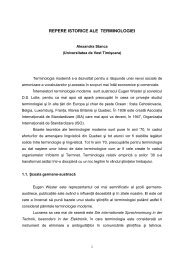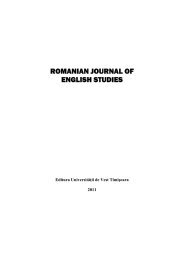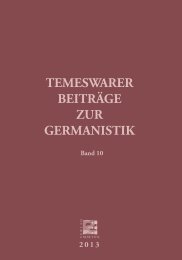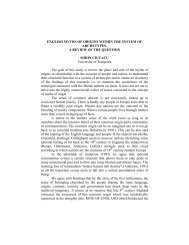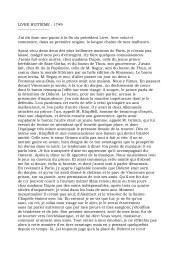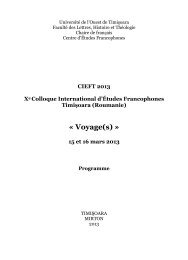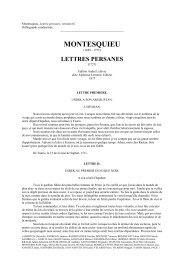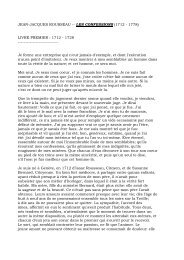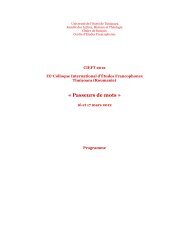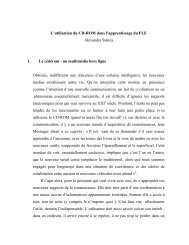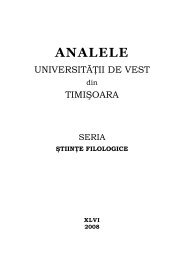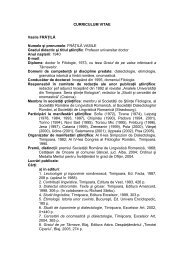TRANSLATION AND MEANING: A CULTURAL- COGNITIVE ...
TRANSLATION AND MEANING: A CULTURAL- COGNITIVE ...
TRANSLATION AND MEANING: A CULTURAL- COGNITIVE ...
Create successful ePaper yourself
Turn your PDF publications into a flip-book with our unique Google optimized e-Paper software.
These goals can be reached by means of three actions:<br />
1) evaluation of target text with respect to task specifications,<br />
i.e. translation purpose, targeted readers and their<br />
expectations, relation of source text to target text;<br />
2) evaluation of target text as a target language piece of<br />
writing;<br />
3) adjustment of content and form in the light of the evaluation<br />
results (Sager, 1993: 237).<br />
The actions are carried out either by the translator himself/herself, or<br />
by revisers in the translation departments of large organizations. Even in<br />
translation departments, brief or routine texts intended for in-house use are<br />
evaluated and revised by the translator. Only important or long texts that<br />
regulate organization interactions such as contracts and agreements, or texts<br />
intended for publication are evaluated by various revisers and experts, e.g.<br />
lawyers, engineers, doctors, technical writers. The revisers may make the<br />
necessary corrections and adjustments themselves or may pass the<br />
observations to the translator, who then makes the corrections and<br />
adjustments.<br />
When routine texts are translated, for example personal documents<br />
like certificates, diplomas, letters of recommendation or organization<br />
documents like memos and formal correspondence, the translator checks the<br />
text for the desired properties and qualities and makes the modifications at<br />
the same time. With important texts, control and adjustments may be done<br />
at the same time or separately, the actions being performed as many times as<br />
the number of features checked or modified. These features may be content<br />
completion, appropriateness of expression, punctuation, spelling, etc.<br />
(Self) Evaluation is concerned with:<br />
A. the relationship between the source text / source of<br />
information and the target text and the level at which the<br />
relationship takes effect: purpose, content or form;<br />
B. the target text qualities.<br />
A. The evaluator checks the target text for:<br />
• its faithfulness to source text content and form; or<br />
• it similarity of content / style / effect with the source text,<br />
as the case may be.<br />
Specifically, he/she checks the accuracy of content relay, i.e. checks<br />
for omissions, redundancies and changes of meaning. When the similarity of<br />
meaning is checked, the evaluator focuses on the amount of information<br />
relayed from the source to the target text and whether this amount<br />
corresponds to the translation situation. When the target text has to be



